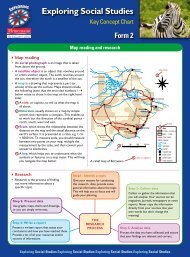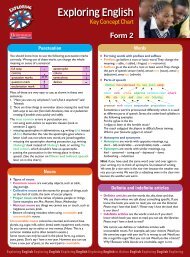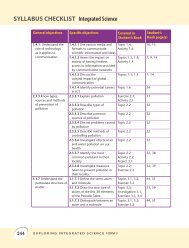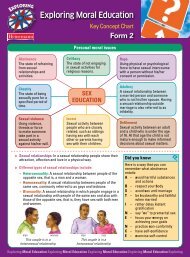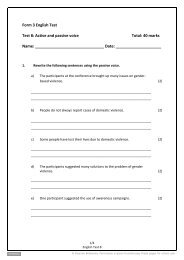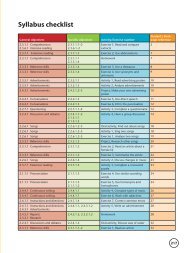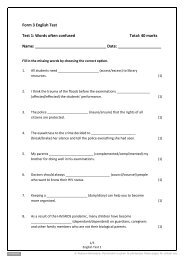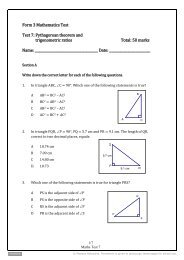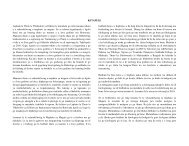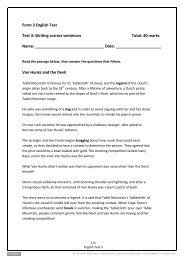Teacher's Guide - Pearson
Teacher's Guide - Pearson
Teacher's Guide - Pearson
- No tags were found...
You also want an ePaper? Increase the reach of your titles
YUMPU automatically turns print PDFs into web optimized ePapers that Google loves.
c h a p t e r1 NumbersSyllabus: General objectiveThis chapter deals with numbers and number concepts. Students must have a clearunderstanding of all the different types of numbers.Specific objectives• y Classify numbers into the categories in which they belong.• y Use a calculator to deal with numbers.Students have to develop the skills to do the four basic mathematical operations –multiply, divide, add and subtract – with very large and very small numbers inscientific notation and normal notation on their calculators. Students should knowhow to convert between the different modes and be able to interpret numbers inscientific notation and normal notation.Help students develop a ‘feel’ for significant numbers. For example, the budget ofBotswana is measured in billions of pula. This means that amounts of P500 orP1 000 do not have any significance when compared to such a large figure.However, values of P1.00 and P0.50 are significant when referring to, for example,the price of petrol.AnswersActivity 1.1 (Student’s Book page 4)1. a) –4 ∈ Z, IQ, IRb)1__ ∈ IQ, IR3c) –2 ∈ Z, IQ, IR2. a) Trueb) Falsec) TrueNote: π is a transcendental number, because it does not originate from an integervalue. The value of √ ___13 is irrational because it is non-recurring and 13 is an integer.For the purpose of this book, students should regard π as irrational.Chapter 1: Numbers1





